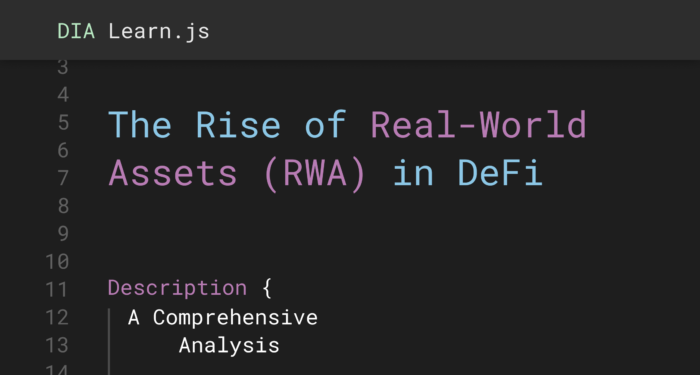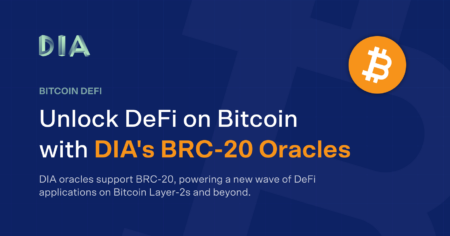The Rise of Real-World Assets (RWA) in DeFi: A Comprehensive Analysis
Learn how assets from the physical world like real estate, bonds, and commodities are being tokenized, heralding efficiency, transparency, and accessibility.

The integration of Real-World Assets (RWAs) into decentralized finance (DeFi) is a transformative movement reshaping the landscape of both traditional finance (TradFi) and blockchain. RWAs, encompassing both tangible and intangible assets from the physical world such as real estate, bonds, and commodities, are now being tokenized and brought onto the blockchain, heralding new possibilities for efficiency, transparency, and accessibility.
Understanding Real-World Assets (RWAs)
The Essence of RWAs
Real-world assets (RWAs) are assets from our everyday physical and financial environment that are tokenized for integration into the blockchain ecosystem. This process not only democratizes asset ownership but also enhances liquidity, transparency, and accessibility, offering a bridge between traditional finance and DeFi.
Tokenization: A Gateway to Blockchain
Tokenization involves converting the rights to a real-world asset into a digital token on a blockchain. This process makes traditionally illiquid assets more accessible and tradable on a global scale, leveraging blockchain technology for enhanced security and efficiency.
The Significance of RWAs in DeFi
Transforming Financial Infrastructure
RWAs have the potential to revolutionize DeFi by incorporating assets from the traditional economy, thus broadening the scope and utility of blockchain technology. By integrating RWAs, DeFi can attract more significant investment, diversify risk, and offer novel financial products that combine the best of both worlds.
Enhancing Liquidity and Stability
The adoption of RWAs in DeFi protocols can mitigate the cyclical nature of on-chain yields, providing a more stable and diverse investment environment. This integration also addresses liquidity issues by making assets more accessible and tradable across different platforms and jurisdictions.
Practical Examples of Real-World Asset Tokenization in DeFi
The tokenization of Real-World Assets (RWAs) represents a groundbreaking intersection of traditional finance and decentralized finance (DeFi), offering a novel approach to asset management, investment, and ownership. This section delves into practical examples and case studies where tokenization has enhanced the accessibility, efficiency, and transparency of assets like real estate, bonds, and commodities.
Example 1: Real Estate Tokenization with MakerDAO and New Silver
- Overview: One of the standout examples of real estate tokenization in DeFi is the collaboration between MakerDAO (leading DeFi platform), Centrifuge (onc-hain RWA platform) and New Silver (real estate lender). New Silver, in collaboration with Centrifuge and MakerDAO, tokenized real estate loans, achieving a $30 million securitization milestone. Additionally, this partnership allows MakerDAO to use tokenized real estate loans as collateral for its DAI stablecoin.
- Impact: This integration has opened up new avenues for investors, enabling them to participate in the real estate market with lower entry barriers. It also demonstrates the potential for DeFi to provide liquidity to traditionally illiquid assets, such as real estate, by making them accessible to a global pool of investors.
- Educational Insight: For Web3 and blockchain developers, this case study highlights the importance of creating interoperable and secure platforms that can handle complex assets like real estate. For non-crypto users, it showcases how blockchain technology can democratize access to investment opportunities that were previously out of reach.
"More businesses are exploring DeFi to get money quicker, on their own terms, and without having to go to a bank. Realizing DeFi was the solution, New Silver started using Centrifuge and became the first pool to onboard with MakerDAO. This collaboration shows how DeFi is moving to create a more open and fair financial system for everyone."Lucas VogelsangCentrifuge CEO
Example 2: Bond Tokenization in DeFi with Societe Generale – Forge
- Overview: Societe Generale – Forge, a digital capital markets platform developed by the major French bank Societe Generale, issued a €100 million bond as a security token on the Ethereum blockchain in 2023. This was one of the first instances of a major financial institution leveraging blockchain technology for bond issuance.
- Impact: The tokenization of the bond significantly streamlined the issuance process, reducing the need for intermediaries and thereby lowering costs. It also improved transparency and efficiency in bond trading and settlement, making the bonds accessible to a wider range of investors.
- Educational Insight: This example illustrates the transformative potential of blockchain technology in enhancing the efficiency and accessibility of traditional financial instruments like bonds. For developers, it underscores the need for robust and scalable blockchain solutions that can meet the regulatory and technical requirements of financial markets.
Example 3: Commodities Tokenization Through DeFi with Paxos Gold (PAXG)
- Overview: Paxos Gold (PAXG) is a digital token representing one fine troy ounce of a London Good Delivery gold bar, stored in professional vault facilities. Anyone who owns PAXG has ownership rights to that gold under the custody of Paxos Trust Company.
- Impact: PAXG brings the benefits of physical gold ownership together with the efficiency and speed of blockchain technology. It enables investors to own, trade, and leverage gold as a liquid asset without the drawbacks of physical gold storage. Additionally, it provides a hedge against market volatility and inflation.
- Educational Insight: For both crypto enthusiasts and traditional investors, PAXG represents a practical application of blockchain technology in making commodity investments more accessible and liquid. It serves as a case study for developers on creating tokenized assets that require rigorous compliance with regulatory standards and secure, transparent custody solutions.
Furthermore, various platforms and projects have begun exploring the tokenization of both commercial and residential real estate, aiming to make property investment more accessible to retail investors. These include initiatives to tokenize shopping centers, malls, and apartments, allowing for easy investment, trading, and ownership transfer of fractionalized assets.
Blockchain Oracles: The Linchpin for RWA Integration
Enabling Real-World Connectivity
Blockchain oracles play a crucial role in the integration of RWAs into DeFi by bridging the gap between on-chain protocols and off-chain real-world data. Oracles ensure that tokenized assets are accurately represented and updated on the blockchain, maintaining their real-world value and relevance.
DIA: A Case Study in Oracle Solutions
DIA is an example of an open-source, data and oracle platform that significantly contributes to this integration by providing accurate, transparent, and verifiable data to smart contracts on the blockchain. But what makes DIA stand out?
DIA sets itself apart by focusing on the decentralization of data collection and verification. This approach ensures a higher level of security and reduces the risk of manipulation, making it an excellent choice for the integration of RWAs into DeFi.
Decentralized Data Sources
DIA aggregates data from a wide array of sources, including traditional financial markets, digital asset exchanges, and directly from the blockchain. This variety ensures that the data feeding into DeFi protocols is not only comprehensive but also reflects the true market conditions of RWAs.
Transparent Data Verification
Transparency is at the core of DIA’s operations. It allows users to verify where the data comes from and how it’s processed before being fed into the blockchain. This transparency is crucial for trust in DeFi applications that rely on real-world data, such as those involving tokenized real estate, bonds, and commodities.
Customizable Data Feeds
DIA provides the unique ability to customize data feeds according to the specific needs of a DeFi project. This flexibility is vital for RWAs, where the data requirements can significantly vary from one asset class to another. For instance, the data needed for tokenizing real estate differs from that required for commodities like gold or oil.
DIA’s Contribution to RWA Tokenization
In the context of RWAs, DIA’s oracle services can be leveraged to provide crucial information needed for tokenization, valuation, and transaction verification processes. For example, in real estate tokenization, DIA can supply up-to-date property valuation data, rental yields, and other market dynamics critical for investors and platforms alike.
Future Outlook: Expansion and Innovation
The Growth Trajectory of RWAs
The RWA sector is experiencing rapid growth, with increasing adoption among DeFi protocols and traditional financial institutions. This trend is expected to continue, driven by technological advancements, regulatory clarity, and the growing recognition of the benefits of blockchain technology.
Innovations on the Horizon
As the RWA market matures, we can anticipate further innovations in tokenization processes, oracle services, and DeFi products. These developments will likely lead to more efficient markets, broader asset accessibility, and enhanced financial inclusion.
FAQs on RWAs
RWAs refer to tangible and intangible assets from the physical world that have been tokenized for integration into the blockchain.
RWAs introduce new asset classes to DeFi, enhance liquidity, diversify investment options, and bridge the gap between traditional finance and blockchain.
Oracles provide the essential link between off-chain real-world assets and on-chain representations, ensuring accuracy, transparency, and trustworthiness of tokenized assets.
Challenges include ensuring regulatory compliance, managing asset custody effectively, and maintaining market liquidity for tokenized assets.
The RWA sector is poised for significant growth and innovation, with advancements in technology, regulatory frameworks, and DeFi integration strategies driving its expansion.
Larry Fink wants to tokenize stocks, bonds, every financial asset he can.
What platform do you think BlackRock wants to do this on?
Ethereum. pic.twitter.com/hErFZWczjG
— eric.eth (@econoar) January 13, 2024








